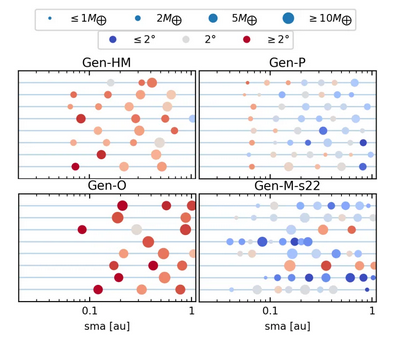Genesis DataBase
Genesis DataBase
The planet formation process has a major impact on the potential for worlds to harbor life. Worlds in the liquid-water habitable zone tend to form mostly from planetary building blocks that were exposed to high temperatures and are often depleted in volatiles and organics, such as water and other biocritical ingredients. Understanding possible formation histories for the planetary systems we are exploring is an essential step towards understanding their potential for life (e.g., Apai et al. 2018).
Planet Formation Models
In the frame of the Earths in Other Solar Systems project our team has developed an extensive library of planet formation models, including the planetary systems that emerged from these simulations. This comprehensive library of simulated planetary systems – the Genesis Database – provides an opportunity for researchers worldwide to explore connections between the initial and boundary conditions of forming planetary systems and the final planetary system architectures.
Detailed Accretion History
In addition to the formation history of each simulated planetary system, the Genesis Database also includes the accretion history of each planet: in other words, how much mass and with what composition they have accreted.
Two common use cases for the Genesis Database are (a) to explore how differences in the starting configuration of a pre-planetary system will impact the properties of the planets that emerge, and (b) to find possible formation pathways for a given exoplanetary system, of which we have reasonably good understanding.
(Image: Simulated planets (large circles) and the starting location of their building blocks (dots).)

Explore the Genesis Database
The Genesis Database is a continuously evolving library of simulations. The first extensive set of simulations has been published in Mulders, O’Brien,Ciesla, Apai, Pascucci (2020).
You can explore these models here, and download the data archive here.

Data and Notebooks
Examples of how to query the genesis database are available as Jupyter Notebooks.
- The first example shows how to read in a single planet formation model from the database and plot its planet accretion history.
- The second example show how to extract the population of all simulated planetary systems.
